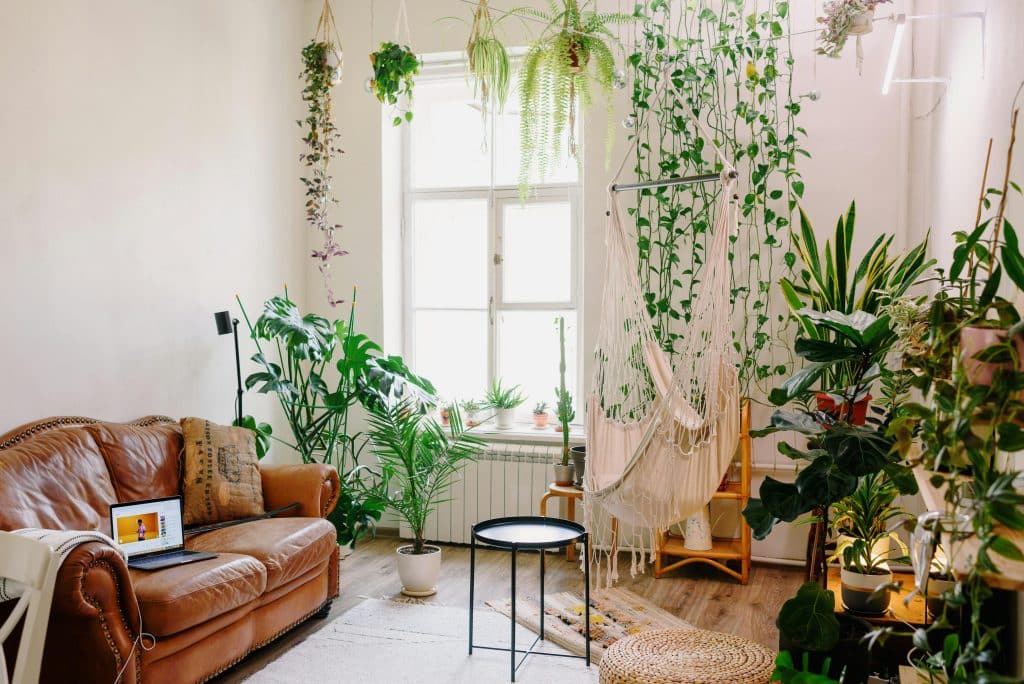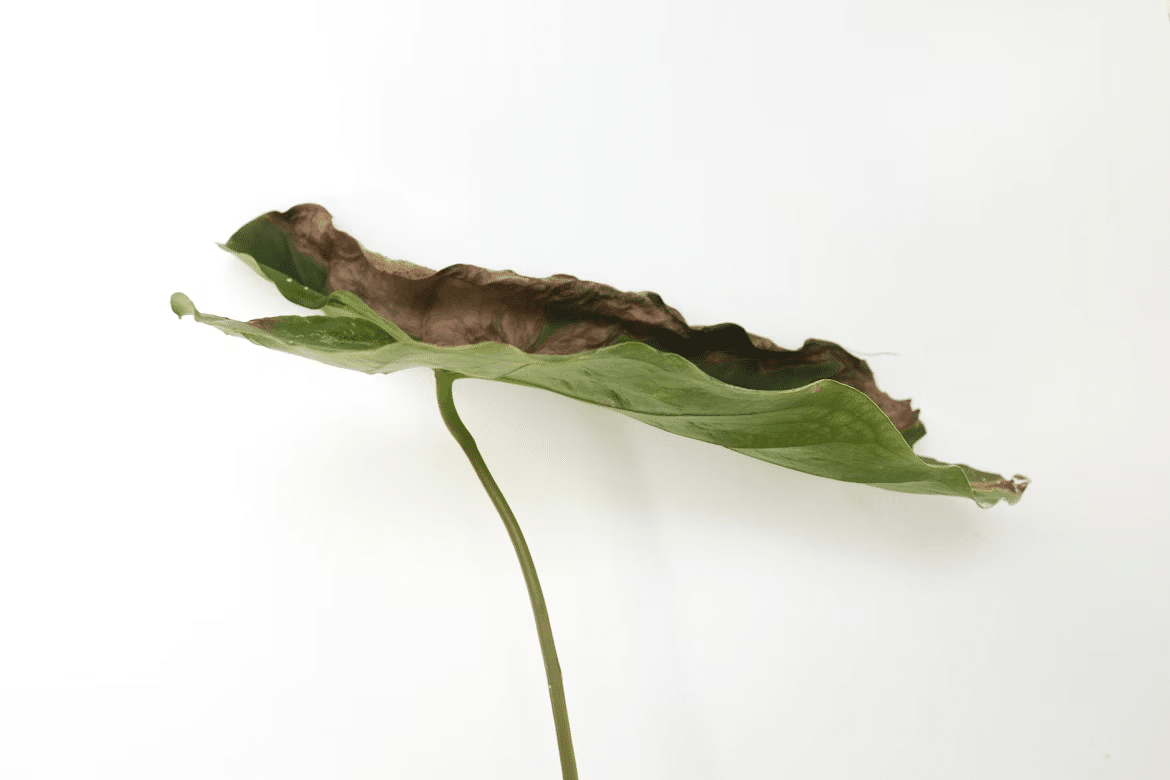Surrounding yourself with plants can lift your mood, clean the air, and make your space feel alive. But caring for them isn’t always easy. Leaves that droop or turn yellow without knowing why can be frustrating and discouraging.
This guide explains what causes plant stress and how to tell when your plants are in trouble. You’ll learn about five common stress problems that affect houseplants and garden plants alike. Each section includes clear tips to help you spot early warning signs and fix the issue before it spreads or kills your plants.
What Causes Plant Stress?
Plants can become stressed when their growing conditions don’t meet their needs. Here is a list of reasons why your plants may be stressed:
- Too much or too little water, improper sunlight, and poor soil drainage are common causes.
- Temperature extremes and harsh winds can also weaken them.
- Using too much fertilizer or the wrong type can create chemical stress.
- Root disturbance during transplanting adds more strain.
- Compact soil or limited space can restrict growth.
- Even pruning at the wrong time or using dull tools can harm plants.
Understanding these factors helps you create a healthier environment, reduce stress, and keep your plants thriving throughout each season.
Can You Notice When Plants Are Under Stress?

Healthy plants have strong stems, vibrant leaves, and steady growth. They respond well to sunlight and show no signs of damage or discoloration. When plants are under stress, subtle changes appear. Leaves may droop, curl, or lose color, and growth can slow down.
You might notice the plant leaning or looking less stable. These small visual cues point to underlying problems in their environment. Pay attention to these early signs to prevent further decline.
5 Plant Stress Problems and Solutions
In the next section, we’ll look closely at the most common causes of stressed plants and how to correct them before the damage becomes severe.
Your Plants Aren’t Absorbing Nutrients
There are some cases when plants can’t absorb nutrients, which causes extreme stress. The problem is referred to as nutrient lockout, and happens when the roots can’t take in essential nutrients, even though they’re present in the soil.
This can happen when pH levels are imbalanced or excess salts build up. Over time, plants show signs of deficiency, such as yellowing leaves, brown edges, and stunted growth. The issue can worsen quickly if not corrected, so leaves become weak and unable to recover.
How to Fix the Problem
- Check the soil pH and adjust it to the correct range.
- Flush the soil with clean, pH-balanced water.
- Avoid over-fertilizing.
- Use nutrient formulas suited to your plant type.
- Ensure proper soil drainage and aeration.
Yellowing Leaves
It’s normal for older leaves to turn yellow as they age, but new leaves should stay green and healthy. When new growth starts yellowing, it’s usually a problem with light or watering. Too much or too little sunlight can cause fading and discoloration. Overwatering and poor drainage can also stress the roots and block nutrient absorption.
How to Fix the Problem
- Move plants to a bright spot with gentle morning sun.
- Use a south-facing window for best results.
- Bring indoor plants outside several times a week.
- Water only when the top two inches of soil are dry.
- Ensure pots have drainage holes and empty catch plates.
The Tips of the Leaves are Browning
Brown tips on leaves can be a sign of fertilizer burn, low humidity, or issues with your water source. Excess salts from over-fertilizing can dry out leaf edges. Using softened water high in sodium or potassium may also cause browning. Many houseplants need more humidity than most homes provide, especially tropical varieties that thrive in moist air.
How to Fix the Problem
- Reduce fertilizer use and follow package directions.
- Switch to distilled or rainwater for watering.
- Mist leaves regularly to raise humidity.
- Group plants together to retain moisture.
- Place pots on pebble trays with shallow water.
- Move humidity-loving plants to kitchens or bathrooms.
Root Rot
Root rot occurs when plant roots sit in water for too long, which can deprive them of oxygen. It’s mainly caused by overwatering, compact soil, or poor drainage. The roots become soft, brown, and start to decay, so it can become difficult for the plant to absorb nutrients. Once it sets in, quick action is needed to save the plant and prevent further damage.
How to Fix the Problem
- Gently remove the plant from its pot.
- Rinse the roots to clear away old soil.
- Trim off all mushy or dark roots.
- Re-pot in fresh, well-draining soil.
- Use a pot with drainage holes.
- Allow the soil to dry before watering again.
Black or Brown Spotting on Leaves
Spots on your leaves are a warning sign of infection. Black or brown spots usually come from fungal or bacterial diseases that spread quickly in humid, crowded conditions. The affected areas may start small but often grow and damage healthy leaves if ignored. Overhead watering and poor airflow make the problem worse.
How to Fix the Problem
- Remove infected leaves and throw them away.
- Avoid placing diseased leaves in compost.
- Space plants apart for better airflow.
- Keep water off the foliage.
- Add a layer of light stones over the soil to block splashing spores.
Final Thoughts

Ignoring early signs of plant stress can lead to serious damage, and it makes recovery difficult. Once problems like root rot or disease spread, plants will fail to bounce back. Act quickly to keep minor issues from becoming fatal.
Each symptom tells you something about your plant’s needs. Use our guide to recognize these signals so you can adjust watering, light, and soil conditions before it’s too late. With consistent care and attention, you can enjoy strong, healthy plants that thrive and brighten your home or garden all year round.








